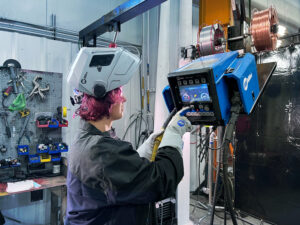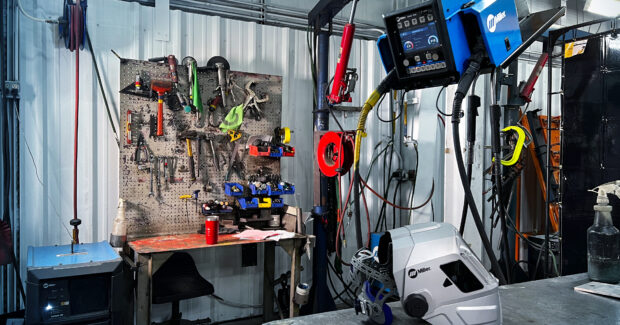Modern Wire Feeders Deliver More Control, Ease of Use
Advances in wire feeder technology, such as improved user interfaces and immediate operator feedback, save time and money.
Posted: April 19, 2023

Some operations may give little thought to which wire feeder they are using in their weld cells. Wire feeders are a vital component of a welding operation. The right wire feeder can reduce training and setup time and help ensure that operators are producing quality welds.
Modern wire feeders can provide control of the welding power source at the feeder, via a color, full-panel LCD screen that makes setup and use easier for operators.
Learn more about how the features and technologies on modern industrial wire feeders can help improve productivity and results.
Wire Feeder Performance
In manufacturing environments, feeders must deliver performance, durability and the ability to handle a wide range of materials and applications. For optimal versatility and performance, it’s a good idea to choose a feeder that is compatible with an aluminum push/pull gun. In addition, choosing a feeder with four drive rolls versus two helps improve wire feedability.
New industrial welding power sources typically include a wire feeder. But there are a range of wire feeders that operations can choose from, with many of the advanced feeders considered an upgrade from the standard feeder that comes with a machine. While the features and technologies included on each level of feeder vary by manufacturer, feeders generally fall under three categories: basic, intermediate and advanced. A more advanced feeder costs more but includes upgraded features and capabilities.
Benefits of Modern Wire Feeders
While the basic design of wire feeders has not changed much over the years, new features and technologies on some modern feeders can provide more control and optimized performance.
- Digital vs. analog: While some feeders are still analog, most newer feeders are digital and designed to match specific digital welding power sources. Older feeders used analog potentiometers that could break down over time due to environmental moisture, which could result in inaccurate voltage and wire speed readings. Most modern feeders use digital encoders and meters, which eliminate this problem and provide more accurate readings. This is especially important if an operation is completing code-quality welds.
- Better tachometers: Feeders for decades have used tachometers to measure wire feed speed. But newer feeders have higher resolution tachometers for more precise wire feed speed readings.
- Presets that make setup easier: Newer feeders make ease of use and setup a priority. For example, EZ-Set technology on Miller® Intellx™ Pro and Intellx Elite wire feeders simplifies parameter setup based on material thickness, removing complexity and reducing welder training time. It also helps new operators ensure they have the right settings for whatever material they are welding.
- Improved user interface: While some of the features on advanced wire feeders have existed for years — such as trigger control, pre-flow and post-flow gas coverage, locks and limits, and weld sequencing — these features are easier to access and use thanks to improved user interfaces on today’s feeders. Where previously many of those features were accessed via side panels or hidden menus, they are now easily found with the push of a button on digital menus and LCD interface screens. The Intellx Elite feeder has a full LCD screen interface — a large, easy-to-read display that allows for full words and phrases, compared to the symbols or abbreviations used on past interfaces that were hard to understand and decipher.
- Immediate operator feedback: Another benefit of the full LCD interface is that it can provide feedback to operators with on-demand graphics. As operators make parameter adjustments, the screen shows how the changes impact their welding arc. This gives operators more control and visibility in their welds and allows operations to accelerate new welders into production faster — with fewer mistakes.
Faster Training and Better Results
From reduced training time and more support and control that help operators produce high-quality welds, modern wire feeders include technologies that can save time and money.
Subscribe to learn the latest in manufacturing.
















